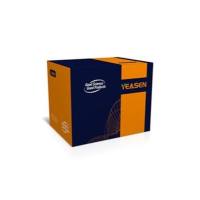Estrogens are C-18 phenolic steroids derived from cholesterol and occur naturally in the forms of 17β-estradiol, estrone, and estriol. Estrogen biosynthesis begins with the transfer of cystolic cholesterol from the cytoplasm into the mitochondrion of steroidogenic cells (1-3). This transfer of cholesterol into the mitochondrion is facilitated by the steroidogenic acute regulatory protein (StAR) (1). This is the rate-limiting step in androgen biosynthesis, as the cholesterol has to be transferred to the site where the cytochrome P450 side-chain cleavage enzyme (P450scc, CYP11A1) is located. As its name indicates, it catalyzes the cleavage of the side-chain of cholesterol (4) to form pregnenolone. Conversion of pregnenolone to estrogens involves five catalyzing enzymes which, in a number of steps, convert pregnenolone to progesterone, progesterone to androgens, and finally, androgens to estrogens (1). The final and rate-limiting step in estrogen biosynthesis is the aromatization of testosterone and androstenedione to 17β-estradiol and estrone, respectively. Aromatization is catalyzed by the P450 aromatase monooxygenase enzyme complex (P450 aromatase, P450arom, CYP19; (5)). In premenopausal women, estrogens are predominantly formed by aromatization in the ovaries. In comparison to premenopausal women, serum 17β-estradiol concentrations in men and postmenopausal women are low. Most of the 17β-estradiol in the latter is formed by aromatization in extragonadal tissues (6), such as the adipose tissue (7), muscle (7), bone (8), adrenal (9), vasculature, and numerous sites in the brain (10, 11). Other estrogen-synthesizing tissues include testis (12), placenta (13), fetal (but not adult) liver (14). Adipose tissue synthesizes estrone from circulating androstenedione (15) secreted by the adrenal cortex (16). Of these two estrogens, 17β-estradiol is the more biologically active. In the placenta, estriol is synthesized from its precursor, 16α-hydroxydehydroisoandrosterone, and this substrate is derived from the fetal adrenal and liver (15). Estrogens may then exert their actions via estrogen receptor-dependent genomic and nongenomic actions, or possibly by estrogen receptor-independent mechanisms (see review (17)).






